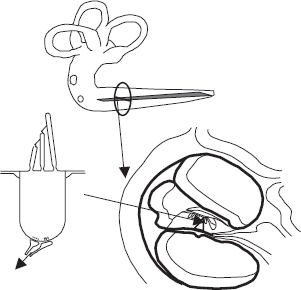Event-Based Neuromorphic Systems
by Shih-Chii Liu, Tobi Delbruck, Giacomo Indiveri, Adrian Whatley, Rodney Douglas
9
Silicon Cochlea Building Blocks

This chapter goes into the details of some of the circuit blocks used in the silicon cochleas discussed in Chapter 4. It looks at some of the basic circuit structures used in the design of various one-dimensional (1D) and two-dimensional (2D) silicon cochleas. Nearly all silicon cochleas are built around second-order low-pass or band-pass filters. These filters are usually described as second-order sections.
9.1 Introduction
For the 1D cochlea, voltage-domain filters have been most commonly used, largely because of historical reasons – voltage-domain circuits were well understood – and partly because there was no compelling reason for using current-domain circuits. The first 2D cochlea (Watts et al. 1992) indeed was also designed using voltage mode second-order filters, but the use of current mode second-order filters greatly simplifies the implementation of the resistive grid, modeling the fluid in the 2D cochlea (see Chapter 4). Hence, later versions of the 2D cochlea have used current-domain (i.e., log-domain) filters.
In this chapter, we will first look at the voltage-domain second-order filters, followed by the log-domain second-order filter. Both the 1D and the 2D cochleas, whether implemented in the voltage or current domain, need exponentially decreasing currents to bias the filters, which we discuss in a separate section. As discussed ...